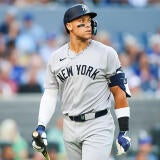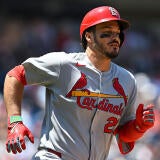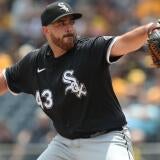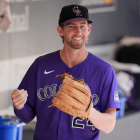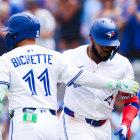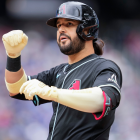Chandler Simpson demotion: Three reasons why Rays sent down exciting rookie speedster
With 19 stolen bases in 35 games, Simpson is considered to be the fastest player in the majors
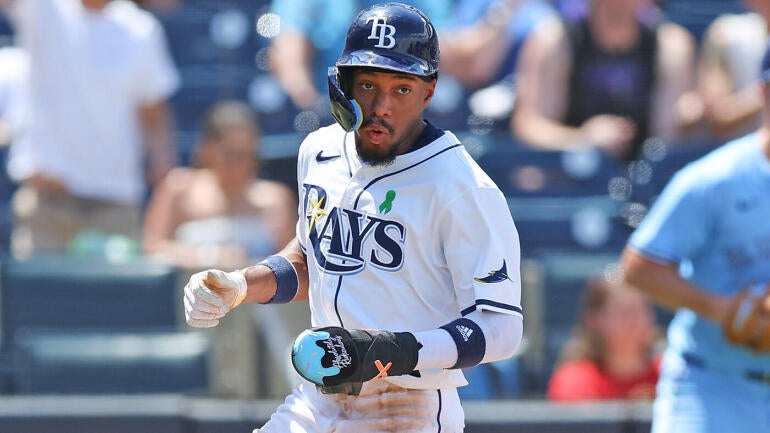
The Tampa Bay Rays raised some eyebrows on Friday when they optioned rookie outfielder Chandler Simpson to Triple-A Durham as a means of clearing space on the active roster for fellow outfielder Jake Mangum. (Mangum had been sidelined by a strained groin since late April.)
Simpson, 24, had hit .285/.315/.317 with 19 stolen bases in 35 games. His blazing speed had earned him a following both locally and nationally. To wit, his average journey from home plate to first base checked in at 3.68 seconds, making him the fastest player in the majors. Additionally, 13 of his 35 hits were classified as being of the infield variety, speaking to his electric kinetic potential.
The Chandler Simpson Experience:
— MLB (@MLB) May 30, 2025
Walks
Steals 2nd Base
Steals 3rd Base
Scores on E2
Kachow⚡️ pic.twitter.com/i9be8Ng2db
"They're all tough decisions," Rays manager Kevin Cash told reporters about demoting Simpson. "Certainly this one was right at the top of the list."
So, just why did the Rays demote Simpson? Below, CBS Sports has highlighted three reasons the move made sense, including the oft-hidden mechanisms that determine transactions.
1. Substandard production
Simpson, however entertaining in motion, hadn't performed well by most measures. His 83 OPS+ ranked eighth out of 10 Rays with 100 or more plate appearances, topping only shortstop Taylor Walls and outfielder Christopher Morel. (More on Morel in a few paragraphs.) His .285 batting average was good but hollow since he had registered just six walks and four extra-base hits.
While Simpson's speed allowed him to steal 19 bases at an 86% success rate, the perceived value of a swiped bag is often higher than the actual value. Indeed, the estimates housed at FanGraphs and Baseball Reference had Simpson's baserunning value canceling out his negative offensive output. Still, it wasn't enough to land him on the sunny side of the various replacement-level calculations.
Chandler Simpson of @RaysBaseball has 32 hits, 14 stolen bases and zero errors through his first 31 career MLB games.
— OptaSTATS (@OptaSTATS) May 26, 2025
Since 1901, no other player has matched that stat line through 31 career games. pic.twitter.com/DxYqLWbb47
Simpson's glove also deserves blame for the last part. According to Statcast, he converted just two of his 10 opportunities on catches deemed to possess difficulty ratings of three stars or higher. He was only 2 for 4 on plays that had a catch probability between 76% and 90%. The gap between his actual success rate and his expected success rate defensively put him in company with the likes of bat-first corner outfielders Nick Castellanos and Teoscar Hernández. Those aren't the names you want associated with an outfielder whose best trait is his top-notch speed.
There's something to be said about a player being entertaining to watch, but for as long as front offices are judged based on results, they're going to prioritize winning games to having fun.
2. Logistics
If you read the section above, you might find yourself wondering why the Rays wouldn't instead option Morel to the minors. After all, he's performed even worse with the stick than Simpson, and has done so without engendering the same kind of enthusiasm from the fan base. The answer is … well, they can't -- not without exposing him to the waiver wire. That's because Morel is out of options, ensuring his place on the active roster until the Rays give up hope of a rebound.
The dirty little secret about MLB roster decisions is that a lot of them are guided by logistical matters. This player has options, that one doesn't; or this player can serve as the backup shortstop or center fielder, and that one can't. (The second part explains why they didn't farm out Walls, who has been splitting time at short with José Caballero.) Once you get a handle on those machinations, you can predict (with a high success rate) what moves will be made ahead of time.
In Simpson's case, he was the odd player out because of his play and because of his options status. There's one other factor worth mentioning: his upside.
3. Future considerations
As odd as it may seem, Simpson's demotion was likely influenced in part by Tampa Bay's hopes for his long-term outlook. That dynamic could've impacted their decision in a few respects.
Foremost, teams tend to prioritize getting their young players as many repetitions as possible so that they can develop fully. One common parlance you hear in sports is that you can't get better by sitting on the bench. With that in mind, even if you don't think Simpson was the third or fourth best outfield option the Rays had on hand, you can understand if they felt he was better served playing every day in the minors as opposed to as part of a timeshare in the majors -- that way he can actively work to improve his hitting and fielding by logging actual in-game experience.
For as much we've focused on Simpson here, let's not overlook the other players involved. No matter what you make of Morel, Mangum, and Kameron Misner, there's an argument to be made in finding out what they can (and can't) do at the big-league level. Mangum and Misner are both already in their late 20s, suggesting that it's now or never for them to have a meaningful big-league career. Morel has scuffled since coming over from the Chicago Cubs last trade deadline, yet he's not far removed from posting a 122 OPS+ and looking like a middle-of-the-order fixture. The clock is ticking louder -- perhaps much louder -- on those three than it is on Simpson.
Besides, all of this is easy enough to reverse course on if a month goes by and the Rays decide that Simpson is the better choice for them as they attempt to run down a playoff spot.
![[object Object] Logo](https://sportshub.cbsistatic.com/i/2020/04/22/e9ceb731-8b3f-4c60-98fe-090ab66a2997/screen-shot-2020-04-22-at-11-04-56-am.png)




